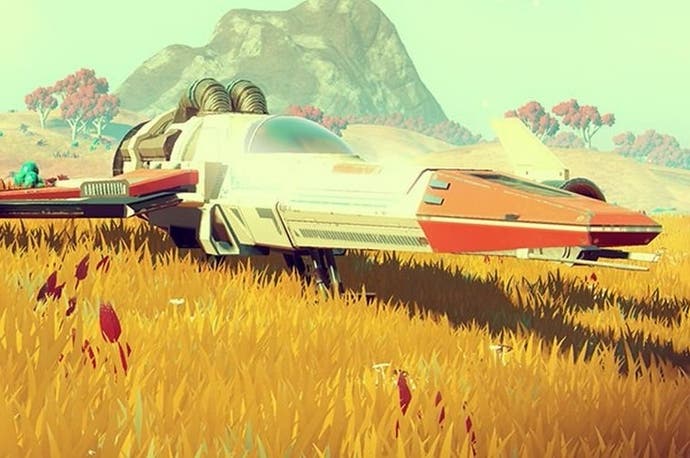Performance Analysis: No Man's Sky
Initial PS4 impressions from Digital Foundry.
We're into our first day with the highly anticipated No Man's Sky running on PlayStation 4 and by and large, in terms of performance, the game is holding up nicely. First impressions are striking: we haven't seen a game quite like this so far in this console generation - its engine relying on voxels and procedural generation to create an open-ended, unique journey for every player. And for a performance analysis, there's simply no telling what you'll find out there that we haven't. We'll continue to update with any further impressions but, we've played enough of No Man's Sky - on patch 1.03, of course - to get a flavour of how the game's mechanics all come together.
So let's kick off with the basics. The PS4 version runs at a native 1080p resolution, and commits itself to a 30 frames per second cap with v-sync engaged. And by and large, it holds up well. For any on-foot action across our very first randomly generated world, we struggled to find any drops at all. And this is really pushing the envelope here - our debut planet is high in flora and fauna, absolutely filled to the brim with tropical trees, hills and wildlife. But even with this immense density of detail, there wasn't much more than one single frame drop from 30fps across that initial hour of play.
Whether it's shooting chunks through the terrain, or sprinting around full-felt, that 30fps target doesn't waver. And from the first 12 planets we've discovered and put to the test, it doesn't appear to matter what climates or weather conditions are in play. Now the only slight downside to the frame-rate cap is the lack of motion blur to back it, in order to make panning motions appear a little smoother. But that's a nitpick: those after super-smooth motion are best advised to wait for the PC version, but for PS4 we're getting an evenly frame-paced delivery at a straight 30fps.
At least, this applies for one half of the game - the on-foot sections where you spend most of your time exploring. But the other half is spent in your ship, and this is where the game's engine is tested. For the most part you'll again be hitting a flat 30fps here, even in complex, vibrant areas like our opening planet. Basically, it seems to be the case that anything that's been procedurally generated in advance runs well to a certain point, and the same usually goes for fast traveling through space.
But big drops do kick in when you really stress the engine, notably with fast movement near the ground in your aircraft. For example, frame-rates can plummet once you land on a brand new planet, and then immediately boost across its surface. In this case, the PS4 is struggling to meet the 33.3ms per-frame render time, while generating new scenery and details on the fly. These are calculations made a split-second before revealing the new terrain or object, and when it can't keep up, we see dips to the 20fps line, and sometimes even lower.
This is something we have seen in previous demos of the game, and it's still clearly an issue for the final version. Curiously, it doesn't necessarily come down to the complexity of the environment - and even a largely waterlogged area has the game running at 15fps - with a low of 13fps at its worst. This lasts as long as you continue pressing the engine and keep boosting full-speed in one direction. But once you double back on yourself with a full 180 turn, or even slow down, suddenly we're back to an even 30fps again. From here, the frame-rate issues disappear once you start moving again.
So there's an easy fix, but why is this happening? Well, logic suggests that the procedurally generated approach to world creation in No Man's Sky is going to be CPU-driven. Everything has to be calculated ad hoc. These drops are essentially a trade-off for not having any loading times, and letting everything render in seamlessly. It's a distraction for sure, but equally, it does takes a very deliberate course of action to make it happen. Bringing the game back to 30fps is also easy, and overall, it's worth putting up with to enjoy the game's unique, seamless approach to exploration.
These are exceptional moments though - and most of the game unfolds at a faultless 30fps. It's a remarkable game so far, and the level of procedural generation is obviously immense: No Man's Sky occupies just 3.69GB on the PS4's hard drive due to its minimal use of scripted, or pre-made assets. It's really the algorithm that does all the hard work, and we're looking forward to seeing just how much more varied our discoveries get as we go.
Stress points aside, the obvious takeaway is that No Man's Sky performs well on PlayStation 4 for the vast majority of its play-time, but it'll be interesting to see how the PC version stacks up. The game looks glorious at 60fps, something you can see for yourself in this library IGN footage from April 2016. We'll report back as soon as we can with the kind of PC hardware required for a premium experience.









